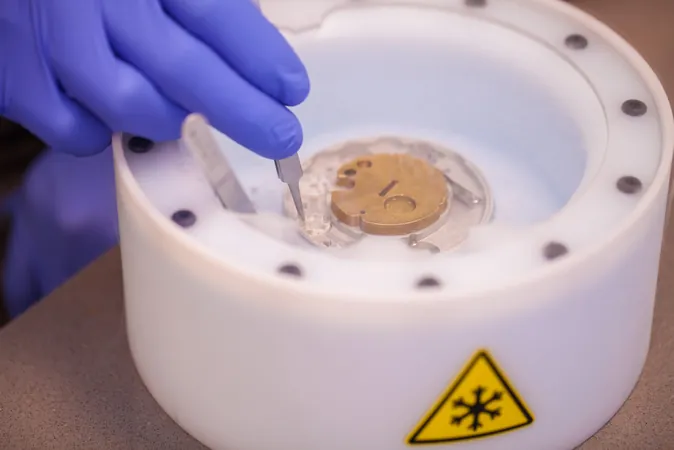
Groundbreaking Discovery Could Revolutionize Drug Development for Cancer and Brain Disorders!
2024-12-27
Author: Jia
Groundbreaking Discovery Could Revolutionize Drug Development for Cancer and Brain Disorders!
In a monumental achievement, researchers at the University of Chicago have unveiled the complete structure of adhesion G protein-coupled receptors (aGPCRs), paving the way for innovative and targeted drug therapies. This breakthrough not only enhances our understanding of these crucial proteins involved in tissue growth and immune responses but also opens the door to addressing significant health issues, including diseases linked to aGPCR malfunctions, such as cancer and various brain disorders.
Adhesion GPCRs form the second-largest family of GPCRs in humans and are essential for maintaining cellular adhesion and signal transmission throughout the body. Due to their intricate and complex structures, no existing drugs have effectively targeted these proteins—until now. Dr. Demet Araç, an Associate Professor of Biochemistry and Molecular Biology at the university and leading author of the study published in *Nature Communications*, emphasized the implications of this discovery, stating, “This opens up new opportunities for drugging adhesion GPCRs, because now we are showing that the extracellular region is communicating with the transmembrane region.”
A Structural Milestone Achieved!
Utilizing cutting-edge cryo-electron microscopy (cryo-EM), the research team successfully captured the first comprehensive image of a full-length aGPCR, including its extracellular and transmembrane regions. After over a decade of dedicated research, Dr. Araç's lab achieved this feat with Latrophilin3—a receptor linked to critical functions in brain development, attention deficit hyperactivity disorder (ADHD), and various cancers.
The project was spearheaded by graduate student Dr. Szymon Kordon, who led efforts to stabilize the extracellular region for imaging purposes. Working alongside Dr. Antony Kossiakoff, the team engineered a synthetic antibody capable of stabilizing the receptor, which was instrumental in obtaining its complete structure.
Unveiling New Activation Mechanisms
The findings indicate that the receptor's extracellular region can adopt multiple conformations, each facilitating unique interactions with the transmembrane region. This challenges previous beliefs about GPCR activation, which primarily relied on separating the GPCR Autoproteolysis INducing (GAIN) domain. As Dr. Kordon elaborated, "Different conformational states correlate to different signaling activity of the receptor." This insight suggests new strategies for precise regulation of receptor functions.
The Future of Drug Design is Here!
The ramifications of this study extend far beyond the realm of structural biology. By attaining a comprehensive understanding of aGPCR functionality, scientists can design drugs targeting the extracellular regions of these receptors, minimizing interactions with other GPCRs and thereby reducing potential side effects. Dr. Araç remarked, "This could be the future of drugging adhesion GPCRs. The advantage of this is that extracellular regions are very different from each other, so you can target them with a drug that doesn’t bind to other receptors and cause unwanted side effects."
With an astounding 33 aGPCRs identified in the human genome, this research marks a pivotal moment in the search for new medical treatments. It holds promise not only for combating cancer and neurological conditions but also for enhancing the precision of medication tailored to individual patients' needs. The implications for future drug development are vast, signifying a new frontier in the fight against some of the most pressing health challenges of our time.
 Brasil (PT)
Brasil (PT)
 Canada (EN)
Canada (EN)
 Chile (ES)
Chile (ES)
 Česko (CS)
Česko (CS)
 대한민국 (KO)
대한민국 (KO)
 España (ES)
España (ES)
 France (FR)
France (FR)
 Hong Kong (EN)
Hong Kong (EN)
 Italia (IT)
Italia (IT)
 日本 (JA)
日本 (JA)
 Magyarország (HU)
Magyarország (HU)
 Norge (NO)
Norge (NO)
 Polska (PL)
Polska (PL)
 Schweiz (DE)
Schweiz (DE)
 Singapore (EN)
Singapore (EN)
 Sverige (SV)
Sverige (SV)
 Suomi (FI)
Suomi (FI)
 Türkiye (TR)
Türkiye (TR)
 الإمارات العربية المتحدة (AR)
الإمارات العربية المتحدة (AR)